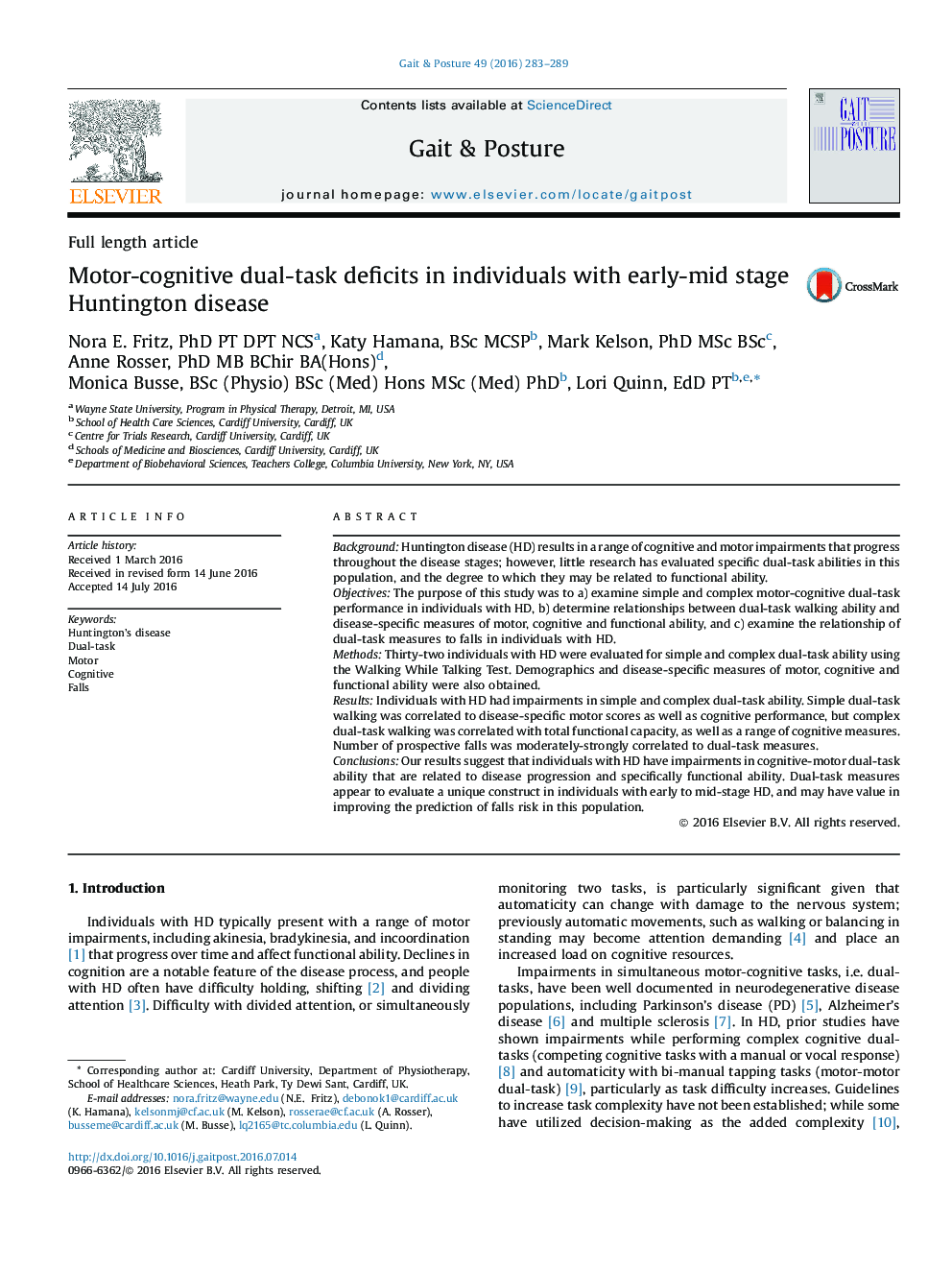| Article ID | Journal | Published Year | Pages | File Type |
|---|---|---|---|---|
| 6205476 | Gait & Posture | 2016 | 7 Pages |
â¢Individuals with HD experience impairments in simple and complex dual-task ability.â¢Simple and complex dual-task ability correlated with cognitive performance.â¢Prospective falls were strongly correlated with dual-task performance.â¢Dual-task measures evaluate a unique construct in early to mid-stage HD.â¢Dual-task measures may have value in improving the prediction of falls risk in HD.
BackgroundHuntington disease (HD) results in a range of cognitive and motor impairments that progress throughout the disease stages; however, little research has evaluated specific dual-task abilities in this population, and the degree to which they may be related to functional ability.ObjectivesThe purpose of this study was to a) examine simple and complex motor-cognitive dual-task performance in individuals with HD, b) determine relationships between dual-task walking ability and disease-specific measures of motor, cognitive and functional ability, and c) examine the relationship of dual-task measures to falls in individuals with HD.MethodsThirty-two individuals with HD were evaluated for simple and complex dual-task ability using the Walking While Talking Test. Demographics and disease-specific measures of motor, cognitive and functional ability were also obtained.ResultsIndividuals with HD had impairments in simple and complex dual-task ability. Simple dual-task walking was correlated to disease-specific motor scores as well as cognitive performance, but complex dual-task walking was correlated with total functional capacity, as well as a range of cognitive measures. Number of prospective falls was moderately-strongly correlated to dual-task measures.ConclusionsOur results suggest that individuals with HD have impairments in cognitive-motor dual-task ability that are related to disease progression and specifically functional ability. Dual-task measures appear to evaluate a unique construct in individuals with early to mid-stage HD, and may have value in improving the prediction of falls risk in this population.
